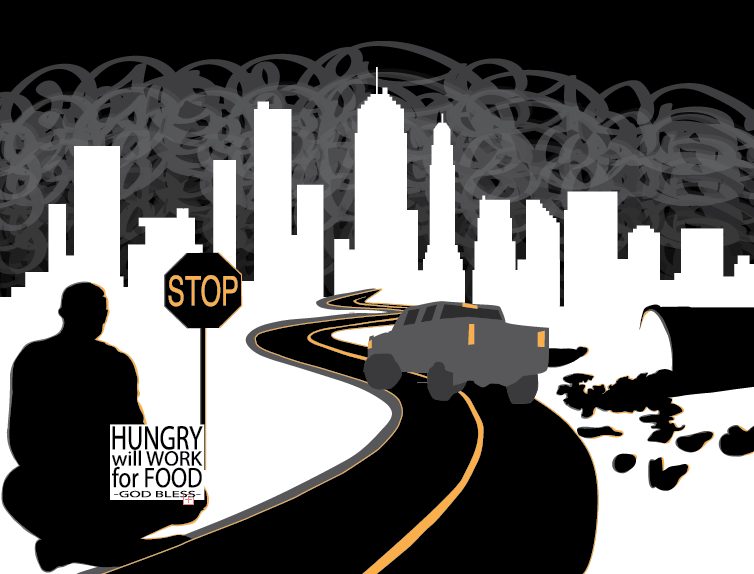Gestalt Principles
For this project, I struggled at the beginning to come up with an idea. I walked around the class as everyone else was wall on their way to a strong project. I began thinking what causes are relevant in my life.
I have lived in Memphis since 2002. Although Memphis is not a fancy city like New York or Chicago, it contains many of the same issues that larger cities have. Throughout middle school and high school, I was very involved in a youth group. Every summer, we spent a week in midtown at a church where we put on a Vacation Bible School for kids in the surrounding neighborhoods. During this week, we would also go and do service projects, such as cleaning up trash. Because of the summers I spent in the heart of Memphis, I am well aware of the undying problems in cities.
Since the problems that Memphis has are also in other big cities, I began trying to figure out how to turn this into a project. After thinking about it, I realized that all of these problems are things that no one wants to take time to deal with.
Air Pollution.
Unemployment.
Litter.
Homelessness.
Next came the composition. Obviously, I needed to have a city skyline. After searching for the perfect one, I decided to create my own. For inspiration, I used the skylines of Los Angeles and New York.
To show air pollution, I new I wanted to have a cloud of smog behind the buildings.
For litter, I placed a tipped over trashcan with garbage falling out everywhere.
Last but not least. The homeless man.

Sadly, I did not achieve all my goals that I had intended with this project. If I were to revisit this piece, I would first start with the car and completely redesign it by making it proportional to its surroundings. Secondly, I would use a tablet to handwrite the message on the sign. And lastly, I would make the smog a discrete intricate pattern, possibly out of words describing what the viewer is looking at.










